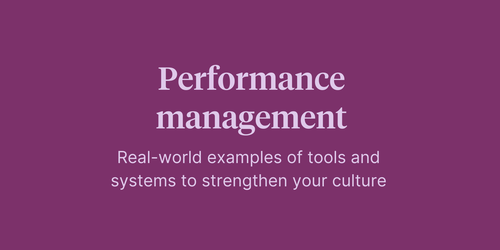
Article
Nobody wants to feel like they’re “on the outside” at work. Most people crave a sense of connection and belonging with their coworkers – so much so that they’re willing to change jobs to find it. Need proof? Employees who feel like they belong are 50% less likely to leave their jobs than those who feel excluded.
As a result, many organizations are starting to advocate for relationship-building among team members. They organize retreats and team outings. Regular lunches and happy hours. Groups and Slack channels are dedicated to shared interests. Buddy programs. Matching t-shirts. Maybe even the occasional trust fall or two.
But, are these efforts to forge bonds between employees actually paying off? Or are employers tiptoeing into dangerous territory where that sense of loyalty and super tight-knit team can actually backfire?
From the company’s perspective, encouraging and nurturing professional relationships (i.e., a work family) makes sense – people tend to perform better when they feel like they’re contributing to a team effort.
Research shows that loneliness was climbing even before the pandemic. When employees feel isolated and alone at work, it can lower their engagement and productivity, and increase turnover. Social connections play a critical role in giving workers a sense of purpose and wellbeing, two attributes that translate to increased productivity over time.
On the other hand, the relationships people build at work aren’t the only ones that matter. Relationships outside the workplace are just as critical for success. If employers put too much focus on professional relationships, without creating time for employees to nurture their personal relationships, they may unintentionally foster a toxic environment where work relationships become more harmful than helpful.
What does this look like? In practice, a lack of appropriate boundaries in the workplace often results in poor work-life balance, employee burnout, and an unhealthy work environment where any attempt to leave – even for a better opportunity elsewhere – feels like a betrayal.
On the other hand, what happens when an employee misses the mark too many times and needs to be disciplined – or even let go? Perhaps they’re not a good fit for the organization or something inappropriate has happened. How could you possibly fire a member of your work “family”?
It’s situations like the above that make it clear that organizations can go too far when promoting connection and belonging in the workplace. Family is family, and work is work, and mixing up the two can lead to organizational dysfunction or toxicity. Both employees and the larger organization will benefit from drawing a clear line between work and life.
Encouraging closeness among employees without cutting into their personal life can feel like a tightrope walk, but it’s possible. First of all, bear this in mind: Work is work, and that’s okay. You can have an engaged and successful team as long as you respect your employees’ time and personal life.
Beyond that, there are a few concrete steps leaders can take to foster healthy relationships among employees at work.
One simple way to help your team develop healthy habits is to make health and wellness a core value of the company. That means both physical and mental health.
You could provide a benefits package that promotes regular wellness activity outside the workplace, such as gym memberships and other employee perks. Welcome the sharing of personal milestones such as completing a half marathon or taking a camping trip. Encourage people to find gym partners and engage in friendly competition with each other.
This approach serves several purposes at once:
Your company likely already offers some sort of health and wellness program. Look for ways to build on that existing momentum, as it may be more effective than trying to get executive buy-in on an entirely new initiative.
Company culture plays a large role in the workplace atmosphere and relationships among coworkers. If you have a cutthroat, every-person-for-themselves culture, people may isolate themselves and feel more lonely.
On the other hand, if your organization has a culture of open communication, trustworthiness, and collaboration, people will be more likely to form meaningful (and healthy) relationships.
To foster this kind of culture, lead by example and model positive relationships for your team.
When you participate in monthly coffee chats with fellow managers or share helpful resources with peers, your team will notice. These small actions demonstrate how to build valuable relationships at work – while still being professional and appropriate.
For a number of years now, it has been trendy for companies to refer to their staff as a “family.” The hope was to encourage a sense of belonging and loyalty, driving people to be more invested in the outcomes of their work.
However, at many companies, the lines between work and family time have blurred. More employees than ever are working from home, eliminating the hard boundary that used to be drawn when leaving the office for the day. These days, we’re connected 24/7. There is an often-unspoken expectation that employees will respond to emails, texts, and phone calls at all hours, even during their personal time.
Words are powerful. No matter how good your intentions are, describing your organization as a family can set workers up for unhealthy relationships with their coworkers. It’s best to avoid the word entirely. You’re a team – but you’re not a family.
Finally, instead of pushing employees to build relationships at work, take a step back. Provide them with time and space, perhaps make some introductions, and then allow relationships to form organically.
The results can be just as powerful in fostering that sense of belonging, without the forced and potentially damaging expectation that all coworkers must act as if they’re a close-knit family. Providing space might look like:
Whatever tactic you choose, the idea is the same – back off and let relationships form naturally. The results are likely to be much more meaningful.
Connection with others is a critical part of health and happiness for nearly everyone. This is just as important in the workplace as it is at home – people need to feel connected to feel engaged and do their best work.
However, in fostering those feelings of connectedness, it’s easy to take things too far and swing into a space that’s ultimately harmful to everyone. When the workplace “family” starts to cut into an employee’s time with their actual family, problems can arise. Boundaries are compromised and burnout ensues.
It’s possible to walk this line successfully and these tips will get you started. Ultimately, perhaps the most important thing to remember is that sometimes work is just work – and that’s perfectly okay.
